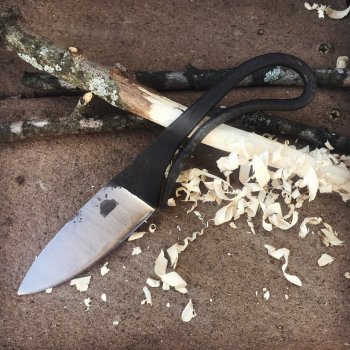Iron has a very high affinity to oxygen, I have found that the less alloying, and the closer to a basic iron/carbon alloy, the greater the scaling may be. Scale is, after all, nothing but super heated rust. We really don't see much of a contrast with any modern steel. But if you ever work with ancient steels. like bloomery product or tamahagane, you will see the difference in a very clear way. That stuff scales like crazy! If you want an idea of what I am talking about, forge a bit of wrought iron, it will give you a small taste of the scaling I am referring to. we are truly blessed with our modern alloys when it comes to material loss to scaling.

